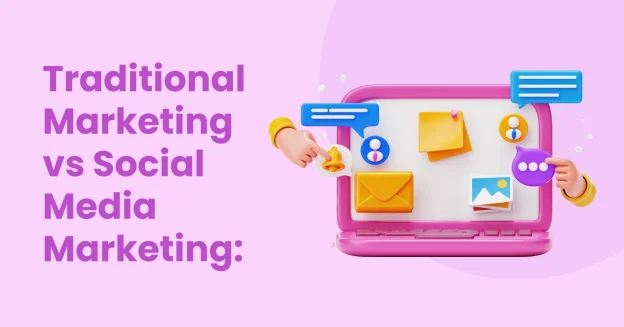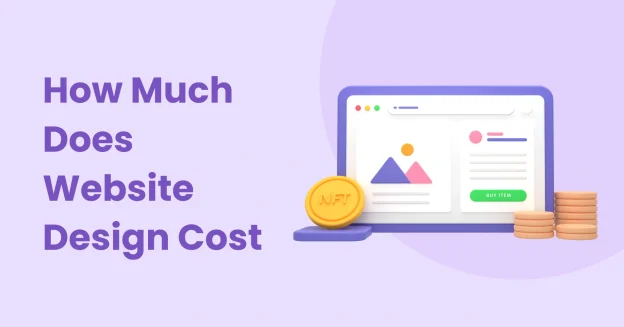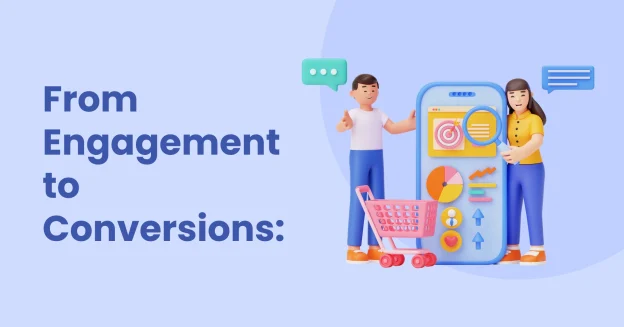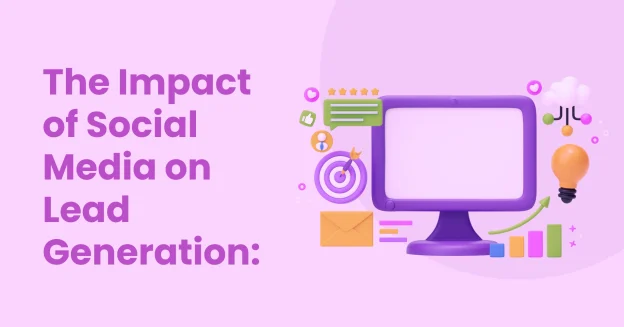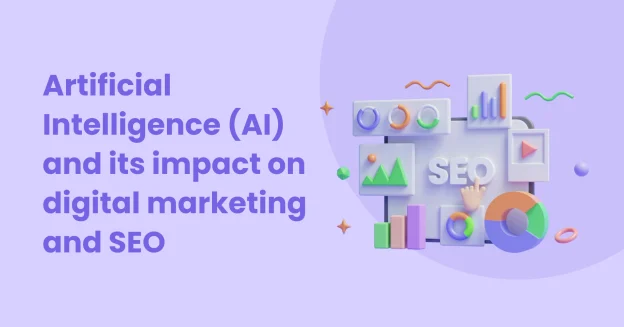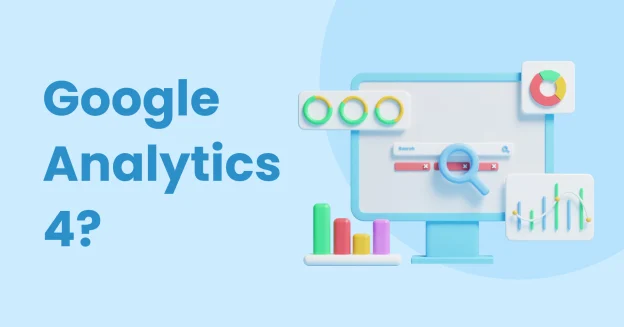Understanding the Nature of Website Design and Its Relation to Cost
The first area to consider when asking, “how much does a website, specifically a website design, really cost?” is understanding the nature of the task at hand. To comprehend website design and the costs, web design should be viewed not just as an aesthetic endeavour but one that encompasses a range of aspects imperative to the functionality and success of a website. There is an inevitable intertwining between web design and cost, and understanding that relationship plays a vital role when considering the overall website design cost in UK. While delving deeper into web design and costs, it is pertinent to note that the complexities of the design significantly impacts the cost.
What constitutes a website design? Simply put, it’s much more than just a visual representation of a brand on the web. It is the core representation of a business online and entails various components, including user interface and experience design, SEO optimisation, content production, and technicalities like coding. It is a multi-functional platform curated to meet a business’s marketing goals and customer needs – a significant investment and an essential part of any business’s success.
This begs the question again, “How much does a website, a website that encapsulates all the elements required for effective online representation, truly cost?” Determining the web design costs involves a myriad of factors. The cost of a website, or to be more precise, a website design heavily depends on the level of customisation required, the complexity of design elements, the need for features like e-commerce, the size of the website, the required interoperabilities, and much more. To give a rough estimation of web design costs can thus be misleading as it fails to factor in these variances.
Therefore, to understand the real cost of designing a website, a website that doesn’t fall short in functionality and effectiveness, it is necessary to embark on a more in-depth exploration of the client’s unique needs and business objectives. Moreover, the question should not only be about cost, but also about value. The overall value a website brings to a business goes beyond the initial investment in web design. It contributes to brand identity, customer engagement, conversion rates, and ultimately, the revenue of the business.
Hence, website cost, when viewed from this holistic perspective, is a strategic investment for long-term growth. It’s not just about “how much does a website design cost,” but it’s about understanding the direct correlation between the design of your website and the overall success of your business.
Factors Affecting the Website Design Costs
The business landscape in 2024 is vastly intertwined with the digital realm. Thus, understanding the website design cost in UK has become crucial. Multiple factors affect these costs and it’s essential to review each. Foremost, the size of your website plays a significant role in determining the costs. More pages require more design elements, thus, driving the associated costs higher.
Additionally, the complexity of the design chosen significantly influences website costs. A more intricate design necessitates additional hours of labour, resulting in increased costs. However, investing in a more elaborate design can provide a significant return in terms of marketing and user engagement. You can imagine this process similar to insurance, shielding you from potential business drawbacks.
On the other hand, the builder of your choice can impact expenses. For instance, WordPress, being a robust and flexible platform, may cost a bit more than its peers due to its premium features. Domain costs are another aspect to consider, with prices varying depending on the extension chosen (.com, .net, .org).
Website maintenance, although often overlooked, is a recurring cost. Similar to getting credit, the quality of website maintenance directly impacts the health and longevity of a website. Maintenance costs can vary month to month, depending on the volume of updates and improvements needed.
If you opt for custom functionalities to enhance user experience, brace yourself for added costs on top of the existing design fees. The catch is, these functionalities could serve as vital marketing tools, efficiently contributing to the growth of your business. If implemented right, the expense could justify the potential return on investment.
In essence, navigating through these factors is similar to looking for the best deals. It can be overwhelming at first, but remember that each decision will directly shape your website’s effectiveness in serving its purpose for your business. Hence, understanding the nature of website design is paramount.
Thinking long term, the initial website costs should be seen as an investment. The year-to-year return can be substantial if the website is correctly aligned with your business strategy and marketing efforts.
By aligning your marketing with Nautilus Marketing’s expertise, your business should be well-equipped to tackle these website design costs. Remember, the website is not just an expense, but a valuable asset capable of paying back multiple times its initial cost over the years.
Different Website Design Pricing Models in 2024
In the evolving pace of digital technology, a website stands as the embodiment of a brand’s online presence. As such, businesses are investing more in website design to create an immersive and engaging digital experience. There are different website design pricing models in 2024 that businesses need to understand to ensure they are getting the best value for their investment.
The cost of developing a website depends on several variables, such as the complexity of design, functional requirements, the expertise level of the design team, and more. Therefore, the overall cost can greatly vary. One of the more traditional pricing models sees web design charged as a flat fee. In such a model, the agency estimates the time and resources required for the project and provides a single, definitive cost. This model can be beneficial for businesses with a clear vision and extensive specification for their website.
Conversely, there is an hourly pricing model where the cost of website design is determined by the number of hours spent on the task. Here, the client is billed for the actual time the designer spends on creating the site. This type of website costs model allows for more flexibility and is often preferred when a project lacks a clear path forward.
A third model to consider is the retainer model. In this scenario, a business enters into a contract with a web design company, paying a regular set fee for an agreed amount of work per month. This model encourages long-term relationships and a deeper understanding of the business and objectives. Understanding different approaches to website costs can help businesses make the right decision regarding their online platforms.
Regardless of the pricing model, it’s crucial to remember that a professionally built website is an investment, not an expense. It’s part of a brand’s online toolkit to promote products or services, engage with customers, and, ultimately, drive growth. Therefore, the website cost breakdown should be considered a part of a brand’s strategic planning.
For a brand aiming to make a sound investment in their website, Nautilus Marketing brings vast experience and expertise to deliver the best results, no matter the pricing model. With a comprehensive understanding of web design trends, client objectives, and an unmatched dedication to quality, Nautilus Marketing is the ideal choice for businesses aiming to take their digital presence to new heights in 2024 and beyond.
Web Designer Charges and How They Impact The Total Website Cost
In understanding how much a website design cost is in 2024, it is essential to factor in the charges of a web designer. It is critical to realise a web designer is a pivotal asset in crafting an exceptional website. Typically, a web designer’s fees can greatly impact the total website costs. With the growing digital landscape, it’s important to understand what various designers charge, as this directly affects the design cost.
Additionally, understanding this is crucial in planning your budget effectively for the website costs. Analysing website design cost in UK can be complex, especially when estimating how much it would cost for a website. This step is significant as it prompts a deeper understanding of the ever-evolving web designer rates. In fact, the often-heard phrase, ‘you get what you pay for’, is just as applicable to website design costs.
Therefore, when hiring a web designer, businesses should anticipate a direct correlation between the quality of the website delivered and the designer’s expertise level. The cost of hiring a web designer can differ significantly. Some web designer’s may charge a fixed rate for the entire project, while others may bill per hour. This variation in cost can be attributed to the differing rates at which these websites R̅e designed and the unique qualities required from the web designer. Among the key factors that influence how much to develop a website are the complexity of the design, the number of pages, and the specific features required.
These aspects can dramatically affect the cost of hiring a web designer and ultimately the total website costs. It’s not uncommon for businesses to find that the needs for their websites often exceed their initial design cost estimates. As we consider website design costs, it’s important to factor in ongoing costs associated with maintaining a website. These can include hosting fees, domain name renewal, updates, and security.
Thus, it’s vital to approach the question of ‘how much does website design cost’ from a holistic standpoint, keeping in mind the potential ongoing website costs. In 2024, different website design pricing models come into play. These can include package deals, hourly rates, or even a retainer fee for ongoing web designer services. As you consider investing in a website, it’s crucial to investigate these models and understand their implications for overall website design costs.
To conclude, understanding the charges of a web designer and how they impact the total cost is key to estimating accurately how much a new website could cost. Furthermore, businesses have to consider both the initial design cost and potential ongoing website costs in their budgeting strategies.
Deciding on a Site: The Role of Web Design and Redesign Cost
The question “how much does a website” often haunts anyone planning to design a website. Understanding everything about your site is crucial for determining web design costs. It’s imperative to consider how your site’s design, function, and complexity directly influence how much the website should cost. The cost implications of web design costs are vast, from the basic web design costs to more complex web design costs. Your site’s demands immensely influence the final outcome of a website.
A site isn’t just about attractive visuals. A website possesses multiple layers of complexity that contribute to the overall website cost. The website costs, for instance, are linked more to the functionality and usefulness of a site than its aesthetic appeal. Website costs also increase if your site requires added features or advanced functionalities. The more complex a site is, the higher its website costs can go. Similarly, if you choose an intricate design for your site, the website costs can rise exponentially.
Yet, it is essential to understand that the objective of a website should not be compromised for the sake of reducing website costs. A good site is a balance between cost-effectiveness and efficiency. Justifying the required cost is crucial to meeting the high expectations of modern-day site users. Investing in your site, whether it includes website cost or redesign cost, is crucial for a successful online presence in 2024.
Redesign cost particularly becomes a significant factor when you already have a running website but it’s outdated or not serving its purpose. Deciding on a revamp would mean additional web design costs. The web redesigning process should be approached with insight and understanding of how it impacts the existing web structure and website functions.
At last, irrespective of web, site or redesign costs, it is vital to ensure that the investment yields an effective return. The primary focus should always be to create a site that delivers on its promise, despite the cost associated. At Nautilus Marketing, we understand the complexities of web design costs and strive to provide you with the best balance of cost and value.
How to Determine What a Web Designer Will Charge
In the burgeoning realm of the web, it is vital to understand what a web designer tends to charge for their services. The distinctive skills a web designer possesses, together with their years of hands-on experience and understanding of business markets, primarily influence what designers charge. A web designer familiar with a wide range of website builders, inclusive of WordPress, can be of great asset to your company and its online presence.
Most web designers charge either on an hourly basis or a flat rate per project, with monthly maintenance costs also likely to follow. The exact rate of a web designer will undoubtedly rely on the scope and complexity of your business’s website design you aspire to implement. Each web designer uses individual pricing tactics, which are defined by their proficiency level, skill set, and market demand. In addition to this, the geography of the web designer could impact their charges.
Precisely, website design cost in UK can fluctuate, spanning from free or lower-cost DIY website builder options to an intense, custom-built website from a professional web design company. Certain web designers and companies offer free consultations allowing you to better grasp your website requirements and how much you might be expected to dish out each month.
Your business may not require a complex, multi-page portal. Instead, you might solicit a straightforward, well-designed webpage that effectively commingles offline and online marketing efforts. As cost-effective as it is, even a free website might end up costing your business significantly more than you anticipated. This is not just in tangible terms –such as future website redesign costs- but also through potential lost opportunities.
Being aware of what free packages include, it’s helpful to discern precisely what you’re getting for your money. In many instances, ‘free’ does not take the domain into account, which you will have to purchase separately. With some web builders, you might have to contend with intrusive advertisements unless you upgrade to a paid service. Whether you take the ‘free’ path depends largely on your company’s specific requirements for its websites.
To ensure you are optimally navigating through each web designer offers, it’s crucial to get clarity on two points with any potential web designer or web design company. First, understand their pricing model and what it includes, and secondly, seek to unveil the cost implications and the added benefits of opting for a custom website design.
FAQs about Website Cost in 2024
One of the frequently asked questions among businesses planning their web presence in the year 2024 revolves around “how much does a website cost” in this day and age. It’s indeed an essential question as website cost can largely define your overall marketing budget.
First, it is crucial to identify that the website costs can broadly vary depending on several factors. From hiring a professional web designer to determining if you need a website redesign, the cost implications can be significant. In our previous discussions, we dissected various elements affecting the website costs and different website design pricing models. It’s apparent that complexities associated with the web design and content influence the overall website design cost in UK. The charges of a web designer also greatly contribute to the final website cost.
Pertinently, as we move into a new year, the value of good website design when deciding on a site cannot be undervalued. Specifically, the redesign cost might become a deciding factor when considering a website revamp. However, the question remains, “how much does a website cost” in 2024? While there are no fixed costs, given the highly customised nature of websites, understanding basic cost heads can prove beneficial. The foundation of any website is its hosting service. Whether it’s a free hosting service or a paid one, it is a recurring cost that can add to your annual website costs.
In addition, the number of pages, type of content, multimedia usage, and integration of advanced features significantly inflate the website design and redesign costs. As far as web designers’ charges are concerned, they usually range from hourly, per project, or even retainer-based models. These models contribute to the overall website cost. Therefore, it’s integral to determine what a web designer will charge before committing to a contract. While considering all these factors, free options could look tempting for startups or businesses with tight marketing budgets.
However, it’s useful to remember that ‘free’ isn’t truly free. There might be limitations in terms of customization options, scalability, and security in free variants. In conclusion, “how much does a website cost” in 2024 largely depends on your business needs, design complexity, hiring professionals, and decisions such as whether or not to host for free. An informed decision can only be made after a comprehensive understanding of all these components.
Website Builder and E-commerce Platform Costs: A Look at What Designers Charge
The basis of digital presence for any company lies in its website. When considering building a website or redesigning an existing site, a major question arises: ‘how much’ do designers charge for the establishment and functionality of a website? It is essential to observe that the ‘how much’ often varies from company to company, largely depending on the designer’s rate, the nature of the website, and the specific requirements of the client. It is also worth noting that a designer charges per the complexity, scope, and features involved in developing the site.
A common choice for businesses looking to develop a robust online presence is an ‘ecommerce website’. Crafting an ecommerce website involves ecommerce functionality that enables the seamless selling and buying of goods online. Typically, ecommerce website development costs more due to the added ecommerce functionality that the designer charges for, contributing to a higher overall charge.
Website development can be done using various platforms, including but not limited to, the popular WordPress, which is favorable due to its manageable, user-friendly approach. WordPress is a website builder that designers charge differently for, depending on the project’s size and requirements. For instance, implementing a secure payment feature for business transactions might attract extra charges. Such costs can be monthly or depend on the specific builder used.
Another aspect to consider is the monthly charges associated with maintaining the website. Websites, much like other forms of media or technology, require updates and maintenance to continue running smoothly. These monthly charges, in combination with initial designer charges, can significantly impact your budgeting and planning.
When turning to a digital marketing agency, such as Nautilus Marketing, for your company’s digital presence creation, extra factors come into play. This includes elements like SEO optimisation, marketing strategies, social media connectivity, and other promotional activities, which impact the overall rate. Agencies like Nautilus Marketing are known for providing comprehensive services at competitive rates, often providing packages that include various services. WordPress also comes with its assortment of marketing and SEO tools, making it a preferred choice for many.
In conclusion, website development is a complex task that requires careful planning and budgeting. From selecting a good website builder to estimating the designer charges, each step requires careful thought. The question of ‘how much’ is a critical part of the process, ensuring every investment returns the desired value. When chosen correctly, these investments will provide the platform you need to increase visibility, interact with clients, and ultimately grow your business.
Examining the Cost of a Small Business Website: Web Design and Designer Charges
When launching a startup, one critical consideration is how much does a website design cost? It is essential to understand that website costs are not simply about purchasing a domain and hosting. The design of the website, and especially design cost, can be a substantial factor in the overall expenses. The cost for a small business to design a website depends on various elements. If you are running a small business, the design and development of your websites can significantly impact your overall business operations. Given the evolving nature of digital marketing, the website costs have also undergone changes.
When considering how much does a website cost, remember to factor in the costs of engaging a skilled web designer. Different designers charge different rates, and their charges can greatly influence the overall cost of your website. Understanding how much a web designer will charge can ease your overall website design financial planning.
Designing a website for a small business requires outlining a solid plan. Small businesses need to focus on the website costs, and time invested in designing an effective website. The design cost often varies based on the complexity and uniqueness required for the small business website. Here at Nautilus Marketing, we believe making a small business stand out in a competitive landscape is crucial.
In 2024, various pricing models appear to affect website design costs. There is a range of options available, from simple template-based designs to a completely custom layout. The costs of website builders and e-commerce platforms add to the website costs. Considering these variables, the cost for designing a website for a small business can vary significantly. The cost can be a small expenditure if you’re hosting a simple site. However, for more complex websites, the costs can elevate rapidly.
As a small business owner, you need to make a crucial decision on your site’s design and redirected design cost. Keep in mind, the role of website design is not just about visual aesthetics but also about functionality. A well-designed website influences how much time users spend on your site, which can impact your business profits.
So, when you ponder how much does a website cost, remember that the price reflects the complexity, design, and hosting services chosen. Even though small businesses may shy away from higher website design costs, the return on investment can be significant. A robust, well-designed website can prove crucial for your business’s online success. If you have more questions about the website costs in 2024, we at Nautilus Marketing are here to help.
Website Redesign Cost: How Much Will a Web Designer Charge?
Understanding the redesign cost of a website includes knowing how much a web designer would charge. Web designers typically have varying rates; in essence, the designers charge their clients based on the scope of the project. The more in-depth and interactive the project, the higher the website cost most likely. When considering a website or a web redesign for your business, determining the budget becomes crucial. The cost to reinvent your website can vary significantly, depending on whether your site is basic or robust.
If your project is a basic website, a web designer might charge less. A fundamental site usually requires less time and resources, resulting in a lower rate per hour. However, a complex and interactive website that requires extensive media components will likely increase the designers charge. It’s the sophistication of these websites that increases the website cost, and in turn, how much the web designer will charge.
Another factor that adds to the website cost is the hosting and domain fees. These are recurring costs that are often neglected when clients assess their website redesign cost. But remember, a web designer does not usually cover these costs. Putting these fees into consideration early in the project can help a business budget its resources accordingly.
Ultimately, choosing a company like Nautilus Marketing to handle your website needs ensures you get a clear picture of how much the redesign cost will be upfront. We pride ourselves on transparency and strive to provide you with an accurate estimate of not just the redesign cost, but also all the potential costs associated with managing a website, including domain registrations and hosting fees. In doing so, we are dedicated to working within your budget to deliver projects that align with your business vision.
Whether you own several websites or a single business website, it can be an intensive process to worry about all the different aspects of your site. You need to secure a domain, find a reliable hosting company, find a web designer who understands your business’s needs, budget for the project, and a lot more. Working with a dedicated team can significantly reduce the stress and confusion often associated with such a massive project.
In the end, remember that the cost shouldn’t be the only determinant. The value you get from your website, such as increased business reputation and higher client conversions, far outweighs the initial website cost.
Cost of a Specialist Site in 2024: Influencing Factors and Web Design Expenses
In today’s digital age, website design is key to any successful business strategy, and understanding the website costs associated with it is crucial for budget planning. The cost incurred on a specialist site design varies largely due to several factors. With the year 2024 unfolding, businesses are seeking an understanding of the web design expenses they might face when planning for a new website or a redesign of an existing website. Website design is more than just an aesthetic aspect; it’s a multi-faceted procedure that includes the incorporation of a user-friendly framework and the implementation of unique content for the site.
This complex nature of website design correlates highly with its cost, making it an essential service that shouldn’t be taken without due consideration. Recognising the factors that affect web design costs is critical. These may range from the database’s complexity, the intricacies of client requirements, to the nature of the services that a web designer provides. Various website design pricing models are emerging in 2024, all typically centred around the complexity of the site. Costs have a broad range, dictated by how extensive the site is anticipated to be.
Generally, free designs provide generic templates, suitable for small projects but lacking the tailored user experience necessary for larger businesses. As your site grows, you might need to plan for increased web design costs. Web design can substantially influence the total website cost, with the designers’ charges being central to this context. Many factors can determine what a web designer will charge, from the intricacy of the design, the amount of time required, and the web designer’s expertise level.
Other costs include website builder and ecommerce platform costs, which are becoming increasingly popular. The increasing demand for ecommerce and online platforms calls for businesses to establish digital footprints that go beyond regular sites. Specialist sites, such as small business websites, require a more comprehensive design plan and thus potentially higher design costs. Web redesign costs are another aspect to consider as maintaining a fresh and updated website is crucial for keeping up with the evolving digital trends.
These complexities and wide-ranging factors emphasize the importance of initiating adequate budget allocations for web design and related services. Nautilus Marketing recommends in-depth understanding and a comprehensive approach to website costs to avoid unexpected expenses and ensure successful website design.
Keep this in mind when considering website design cost
In 2024, website design cost in UK vary depending on project complexity, customisation requirements, design expertise, and additional features. Understanding the importance of website design as an investment rather than an expense is crucial for businesses aiming to thrive online. By considering the factors that influence website design costs and collaborating with experienced nerds, you can create a visually appealing, user-friendly website that effectively represents your brand and achieves your business goals. Whether you’re a small business or an enterprise, budgeting effectively for website design is essential in today’s competitive digital landscape.
Remember, website design cost in UK should be considered thoughtfully, as optimising your website’s design and functionality can yield long-term benefits and contribute to the success of your online presence.
NB: All costs are only approx and depend on functionality of the website.
Schedule in a free discovery call to chat further and for a bespoke quote: https://calendly.com/nautilusmarketing/discovery

